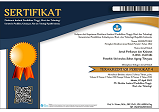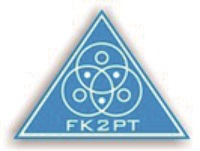PENYEBARAN CACING PARASITIK PADA IKAN KEMBUNG PEREMPUAN (Rastrelliger brachysoma) DI PULAU JAWA
Abstract
province of Bandar Lampung), TPI Muara Angke (DKI Jakarta), and TPI Banyuwangi
East Java province). As many as 160 of 218 R. brachysoma (a prevalence 73.38 %), and number of intencity is 1.378 ± 11.96. The helmint parasitic is a Lechitocladium angustiovum (Digenea: Hemiuridae), Lecitochirium sp. (Digenea: Hemiuridae), Prodistomum orientalis (Digenea: Lepocreadiidae) and Anisakis typica (Nematodes: Anisakidae). Differences in characteristics of R. brachysoma habitat will cause differences in the amount, intensity and prevalence of the helminth parasitic species investment in an area. This is related to the behavior of eating and food availability of R. brachysoma. The distribution of the helminth parasitic in the digestive organs is on intestine (13.72%) and stomach (86.28%), utilizing the existing nutrients as food. In very small amounts, the relationship between the parasite and its host is a mutually beneficial symbiotic relationship but in great numbers, the helminth parasitic infection can lead to secondary infections on the infected organs and can lead to decreased metabolism.
Keyword: distribution, helminth parasites, short body mackerel, Jawa Sea, Rastrelliger brachysoma
Full Text:
PDFDOI: http://dx.doi.org/10.33512/jpk.v4i4.168
Refbacks
- There are currently no refbacks.



_-_Copy1.png)